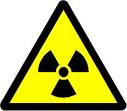COVERUP OF FUKUSHIMA NUCLEAR DISASTER: IAEA Knew Reactors Had Melted Down …
Public Not Told for a Month and a Half

As I noted last week, reactors 1, 2 and 3 all melted down within hours of the Japanese earthquake.
On Monday, Mainchi Daily News provided an important tidbit:
A meltdown occurred at one of the reactors at the Fukushima No. 1 Nuclear Power Plant three and a half hours after its cooling system started malfunctioning, according to the result of a simulation using “severe accident” analyzing software developed by the Idaho National Laboratory.
Chris Allison [a former manager and technical leader at Idaho National Laboratory], who had actually developed the analysis and simulation software, reported the result to the International Atomic Energy Agency (IAEA) in late March. It was only May 15 when Tokyo Electric Power Co. (TEPCO) admitted for the first time that a meltdown had occurred at the No. 1 reactor at the Fukushima nuclear plant.
According to Allison’s report obtained by the Mainichi, the simulation was based on basic data on light-water nuclear reactors at the Laguna Verde Nuclear Power Plant in Mexico that are about the same size as that of the No. 1, 2, and 3 reactors in Fukushima.
According to the simulation, the reactor core started melting about 50 minutes after the emergency core cooling system of the No. 1 reactor stopped functioning and the injection of water into the reactor pressure vessel came to a halt. About an hour and 20 minutes later, the control rod and pipes used to gauge neutrons started melting and falling onto the bottom of the pressure vessel. After about three hours and 20 minutes, most of the melted fuel had piled up on the bottom of the pressure vessel. At the four hour and 20 minute mark, the temperature of the bottom of the pressure vessel had risen to 1,642 degrees Celsius, close to the melting point for the stainless steel lining, probably damaging the pressure vessel.
In other words, the IAEA knew in late March that there was a meltdown. The IAEA informs all of its member states of important nuclear developments.
Government agencies sat on this information, and the world didn’t learn the truth until the operator of the stricken reactors itself made the announcement a month and a half later.
This is not entirely surprising given that governments have been covering up nuclear meltdowns for fifty years to protect the nuclear industry.

